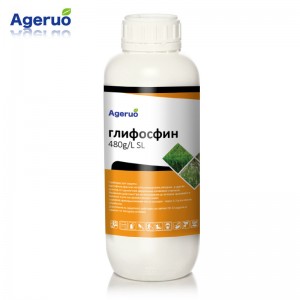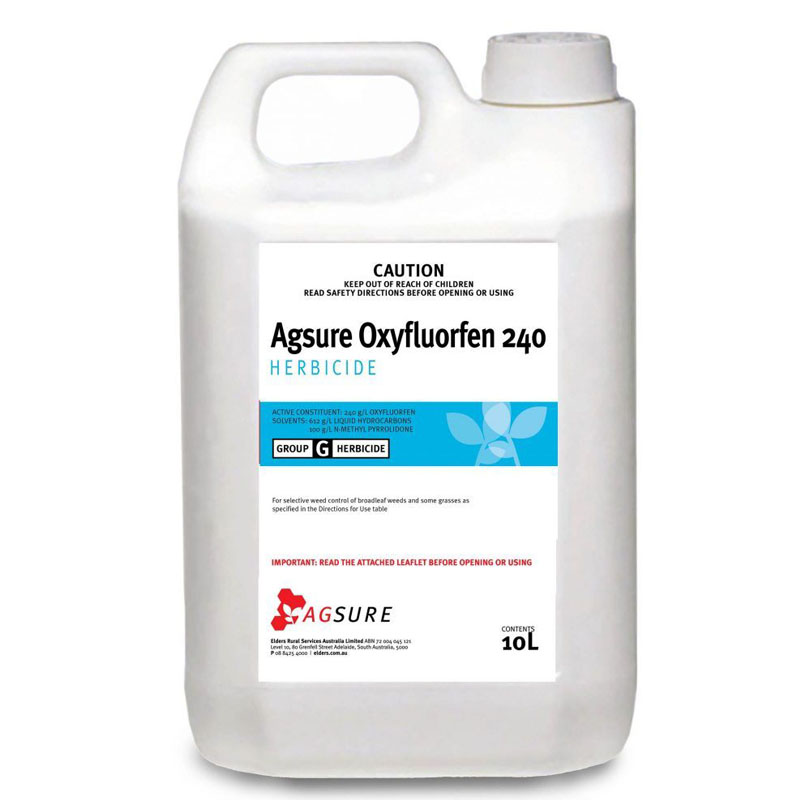Herbicide Glyphosate 480g/L SL CAS 1071-83-6 | Factory Price High Quality

Glyphosate
| Product Name | Glyphosate 480g/l SL |
| Other Name | Glyphosate 480g/l SL |
| CAS Number | 1071-83-6 |
| Molecular Formula | C3H8NO5P |
| Application | Herbicide |
| Brand Name | POMAIS |
| Insecticide Shelf life | 2 Years |
| Purity | 480g/l SL |
| State | Liquid |
| Label | Customized |
| Formulations | Glyphosate Technical: 95%TC Glyphosate Formulations: 360g/L SL, 480g/L SL, 540g/L SL, 75.7%WDG |
Mode of Action
Glyphosate is widely used in rubber, mulberry, tea, orchards and sugarcane fields to prevent and control plants in more than 40 families such as monocotyledonous and dicotyledonous, annual and perennial, herbs and shrubs.
It has a good effect on sunny days and high temperatures. The sodium salt form of glyphosate is used to regulate plant growth and ripen specific crops.
Related reading: 2, 4-D metsulfuron methyl or glyphosate: What’s the difference?
Weed solutions for orchards and rubber plantations
Applicable weed types
Glyphosate 480g/L SL can prevent and control many kinds of annual weeds, such as barnyard grass, dogweed, marestail, oxalis, curly ear, matang, quinoa, traditional witch hazel, pigweed and so on. In addition, it can also effectively prevent and control weeds such as plantain, small fleabane, duckweed, double spiked sparrow barnyard grass and so on.
Usage and Dosage
For annual weeds, 40-70 grams of active ingredient per mu is generally used. For plantain, small fleabane and other weeds, use 75-100 grams of active ingredient per mu. For weeds that are more difficult to prevent and eliminate, such as white grass and sclerotium, 120 to 200 grams of active ingredient per acre should be used. Generally in the peak growth period of weeds, 20 to 30 kilograms of water per mu, the weed stems and leaves for uniform directional spraying, to avoid making the leaves of fruit trees and other leaves affected by the drug.
Precautions
When using Glyphosate 480g/L SL, avoid spraying on the leaves of fruit trees and other cash crops to avoid drug damage. In addition, you should choose to spray in windless or breezy weather to ensure that the liquid evenly covers the weeds.
Agricultural Weed Solutions
Treatment of rice-wheat/rice and oilseed rape rotation plots
On rice-wheat or rice and oilseed rape rotation plots, during the post-harvest stubble reversal period, glyphosate can be used for treatment with reference to the above grass conditions and dosage. On the 2nd day after spraying, seeding or transplanting can be carried out directly without tilling the soil.
Weed control before sowing in no-till fields
Glyphosate 480 g/L SL can also be used for pre-plant weed control in no-till fields. It can be used at 800-1200g per acre, effectively preventing and eliminating all kinds of weeds and providing a good environment for the smooth growth of crops.
Directional spraying between rows of high straw crops
During the growth of corn, sorghum, sugarcane and other high straw crops, when the seedling height is 40-60cm, it can be sprayed directionally between rows, and 600-800g of glyphosate can be used per acre to effectively prevent and eliminate weeds between rows.
Taboo
It is not recommended to use glyphosate for weed control when there are crops growing in the farmland, so as not to cause damage to the crops.
Forestry Weed Solutions
Applicable tree species and weed types
Glyphosate 480g/L SL is suitable for young forest nursery of many tree species, such as ash, yellow pineapple, linden, spruce, fir, red pine, camphor pine, poplar and so on. It can control many kinds of weeds such as big leaf chapter, tussock, white awn, plantain, buttercup, mugwort, thatch, reed, Elsholtzia and so on.
Application method and dosage
Generally use foliar spray treatment, 15-30 kilograms of water per mu. For weeds such as big leaf chapter and tussock grass, 0.2 kg of active ingredient per mu is used; for weeds such as bush birch and elderberry, 0.17 kg of active ingredient per mu is used; while for weeds such as hawthorn and mountain pear, 3.8 kg of active ingredient per mu is required. In addition, hole application with a spray gun or application with an applicator stick to tall weeds and shrubs, and even injection of glyphosate into the body of non-targeted tree species with a tree syringe can be used to achieve the desired results.
Tips for use in special scenarios
Glyphosate 480g/L SL is also an ideal choice for special scenarios such as weeding and irrigation suppression before afforestation, maintenance of forest fire lines, weeding of seed gardens, and suppression of grasses before aircraft seeding. Through rational application, weeds can be effectively removed to ensure the healthy growth of forest trees.
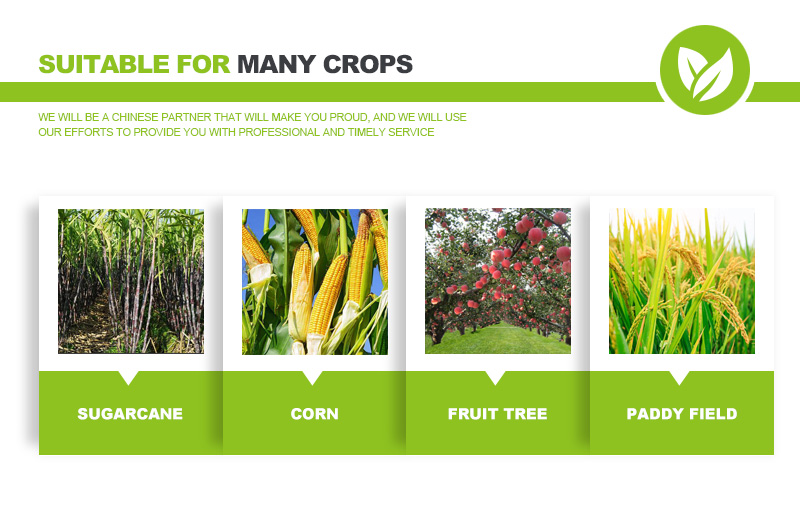
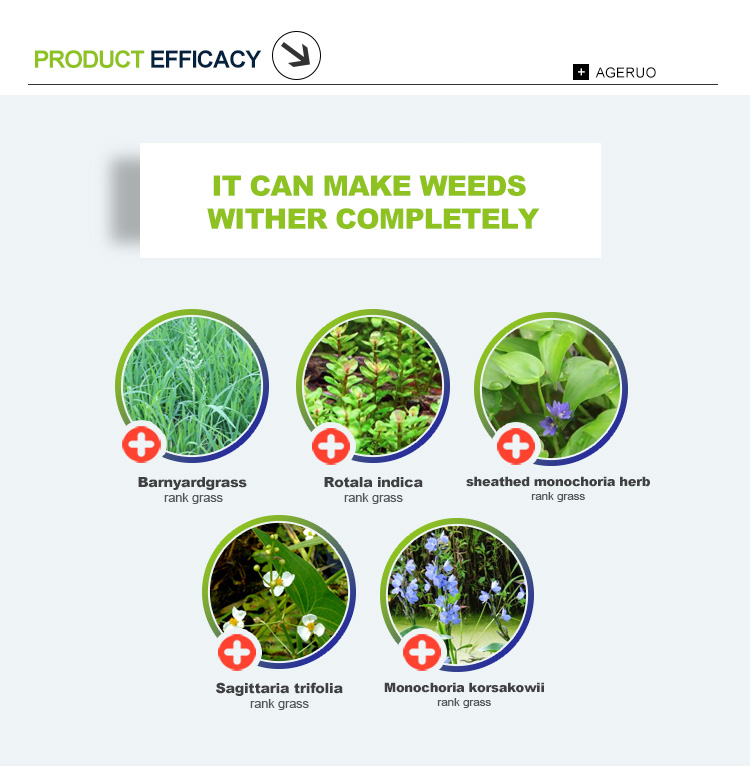
Using Method
| Crop Names | Weeds Prevention | Dosage | Usage Method |
| Non-cultivated land | Annual weeds | 3000-6000 ml/Ha | spray |
| Sugarcane field | Annual weeds | 3750-7500 ml/ha | Stem and leaf spray |
| Tea Field | Annual weeds | 3750-6000 ml/ha | Stem and leaf spray |
Glyphosate FAQ
How is Glyphosate 480 SL used?
Glyphosate 480 SL is usually diluted with water and sprayed on the foliage or directly on the target weed or vegetation. It is commonly used for weed control in agricultural settings, gardens, lawns and non-crop areas.
How long does it take for glyphosate to kill weeds?
Most treated weeds show initial symptoms within 2 to 4 days and are completely killed within 1 to 2 weeks. Larger, more mature weeds may take up to 4 weeks to be completely killed. For best results, apply on a warm, sunny day when daytime temperatures are above 60°F and it will not rain for 24 hours.
How long does glyphosate last?
Depending on the climate and soil type, glyphosate can remain in the soil for up to 6 months. Bacteria in the soil break down glyphosate. Glyphosate is unlikely to enter groundwater because it is tightly bound to the soil. One study showed that half of the glyphosate in dead leaves broke down within 8 to 9 days.
What can I do to make glyphosate work faster?
Adding ammonium sulfate (AMS) to the water in the spray tank before adding glyphosate will act as a water conditioner and improve weed control, with or without surfactant.
Does rainwater help glyphosate?
Glyphosate must penetrate the surface of leaves for effective weed control. Although absorption is relatively fast, rain after application will wash glyphosate away from the leaves.
What weather is best for spraying glyphosate?
Dry conditions: After applying the herbicide, it should be applied when there is no rain in the forecast for at least 24 to 48 hours.
Windless weather: Avoid spraying on windy days to minimize herbicide drift to non-target plants, thus avoiding damage to non-target plants during drift.
What temperatures are not suitable for spraying glyphosate?
When temperatures rise above 85°F, many plants begin to slow or stop the metabolic process of transferring herbicides throughout the plant.
Will glyphosate work in the winter?
Glyphosate’s effectiveness begins to decline when nighttime low temperatures drop below 50°F two days before or two days after application. This can cause problems with early weed control and I am especially concerned when terminating cover crops such as rye, mesquite and wheat.
How long can I keep glyphosate mixed?
It is always good practice to mix only the amount required for treatment, but you can keep unused solutions for up to a week as activity is gradually lost. Make sure you store the herbicide safely out of reach of children and pets.
When can I use glyphosate during the year?
The best time of year to use herbicides is spring, followed by fall. Spring is the best time for weed control because the pre-growth stage of weeds is in the budding stage, which prevents them from germinating. Fall is equally effective because weeds are most vulnerable before winter sets in.
Does glyphosate expire?
Fortunately, most pesticides are relatively stable products and almost all have a shelf life of at least two years when stored properly. Glyphosate is a very stable herbicide. Although glyphosate can freeze, it will re-dissolve when thawed.




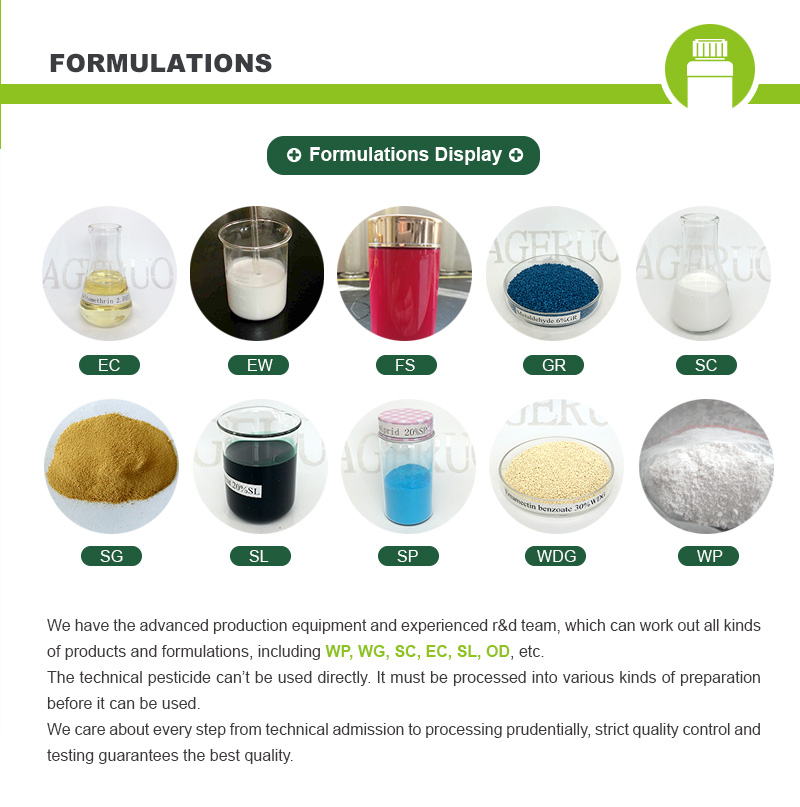
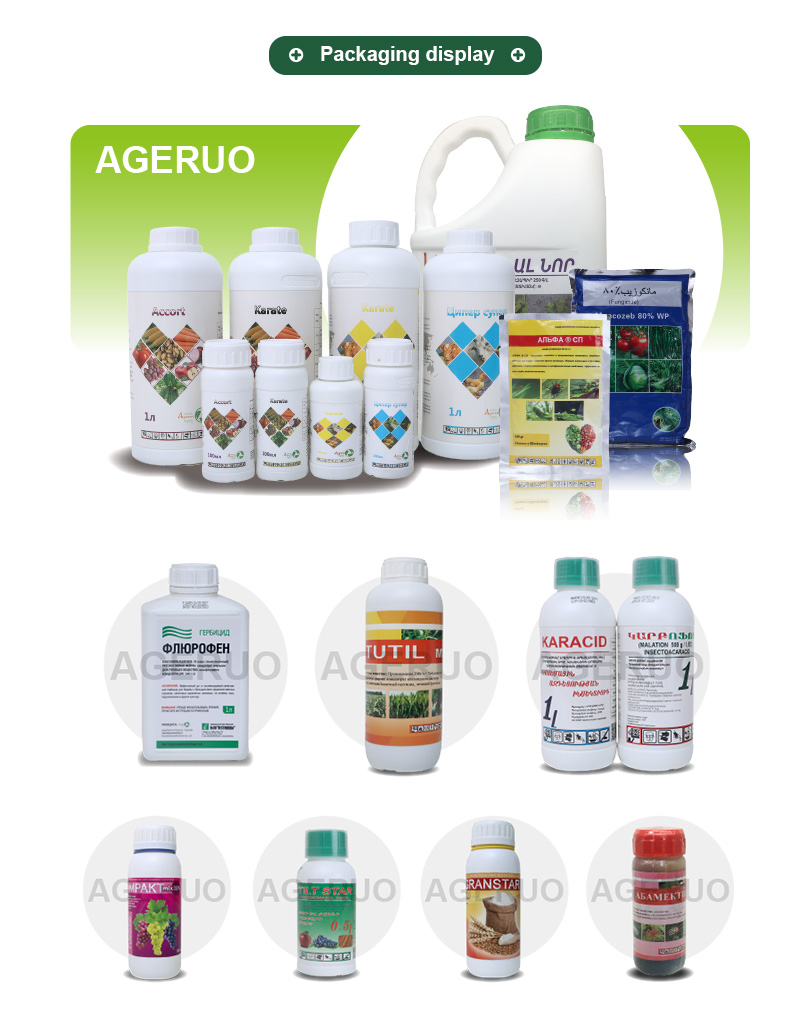

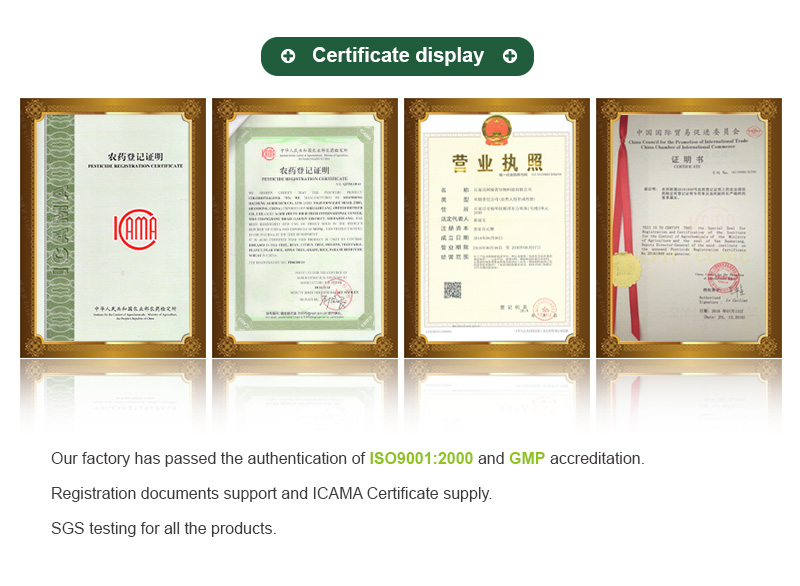
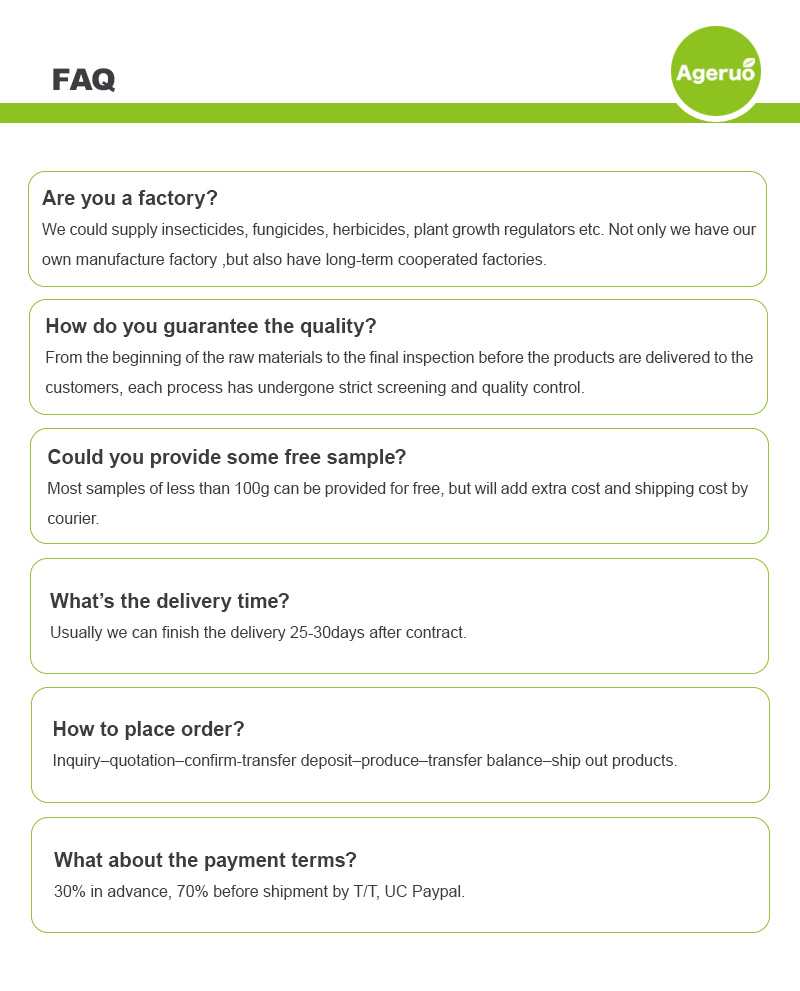



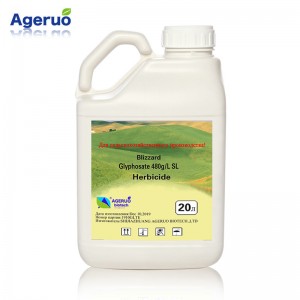
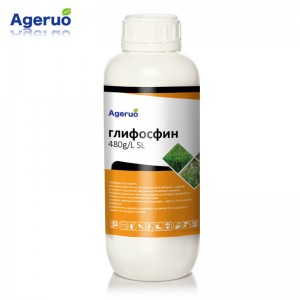
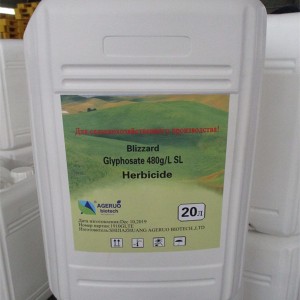
.jpg)
